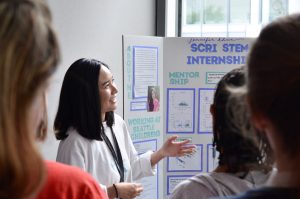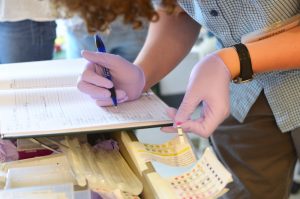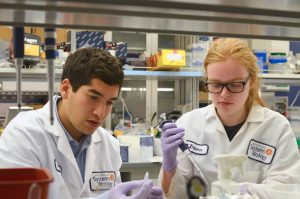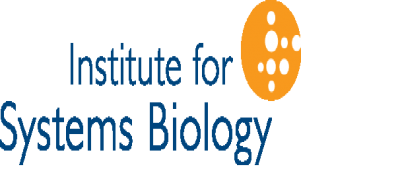Science Communications
by Isiac Orr
Science communication plays an integral role in the science community. As stated in the core values of The Institute for Systems Biology (ISB) , there is a responsibility to share what is learned. The issue is that there is a gap in communications between scientists and the general populace. Communications in the scientific community are full of latin roots, acronyms, and abbreviations that can be confusing to those who aren’t familiar with the scientific field. The communications department at ISB bridges that gap and presents the scientific discoveries and information in a way that brings understanding and curiosity to the rest of the world.
ISB generates massive amounts of scientific information and hosts a variety of workshops, presentations, and discussion groups. The communications department is tasked with recording these events through videos, photographs, and written documentation and then sharing them with the public. Capturing and publicizing these events brings more people to ISB where they can learn, grow, and become motivated thinkers.
I worked with the communications department, under the mentorship of Hsiao-Ching Chou, to learn how they communicate the science of ISB to the rest of the world and aided them in this process.
Videography: Along with photography, many events required video recordings as well. The major need for footage came from Ivan and Linnea’s Project Feed 1010 Documentary. I used the department video recorder to capture the 18 Project Feed interns building, analyzing and tending to the hydroponic systems they built. I also helped record a research in progress presentation to be used by the presenting scientist to improve their work and their performance.
Archiving: A major part of communicating science, is staying in touch with past discoveries. To do this the communications department works with various archiving projects, the first of which involved archiving the surveys and polls that had been sent out to the entire lab over the last 4 years, as well as transcribing a speech from ISB faculty member, John Aitchison. The latest involves categorizing all 1458 scientific papers that have come out of The Institute for Systems Biology since its beginning. I helped comb through the massive amounts of papers to categorize each into one, or two, of the eight available categories as part of a project to create a filterable library of all ISB’s scientific discoveries.
Photography: I was given a Nikon D7000 at the beginning of the project to capture various events, workshops, excursions, and projects. Pictures were taken at the Project Feed 1010 Workshop, the interns’ trip to the Seattle Children’s Research Institute, in all of the labs, in the kitchens, and everywhere in between. Learning to shoot in a lab setting wasn’t easy, though. The lab layout at ISB is covered with sprawling benches, shelves, chemicals, compounds, and an array of instruments. Hsiao-Ching Chou, Director of Communications at ISB, taught me the tricks of photography in all of ISB’s unique spaces.
Working with Hsiao-Ching, and all the great people at ISB, I was able to really see how we can connect everyday people with the everyday science that goes on in the labs through the great projects I got to help with. It was also clear to see how important the work in the communications department is to ISB. There was a lot to learn. The science itself it complicated, yes, but getting the perfect angle, lighting, and focus, while not disrupting the scientists or violating the plentiful safety codes is no walk in the park. It wasn’t always easy, and out of the thousands of pictures I took, only a small percentage were actually viable, but every photo taught me a lot, and I all the time I spent learning at ISB gave me more insight what I want to do with my work in the future.



